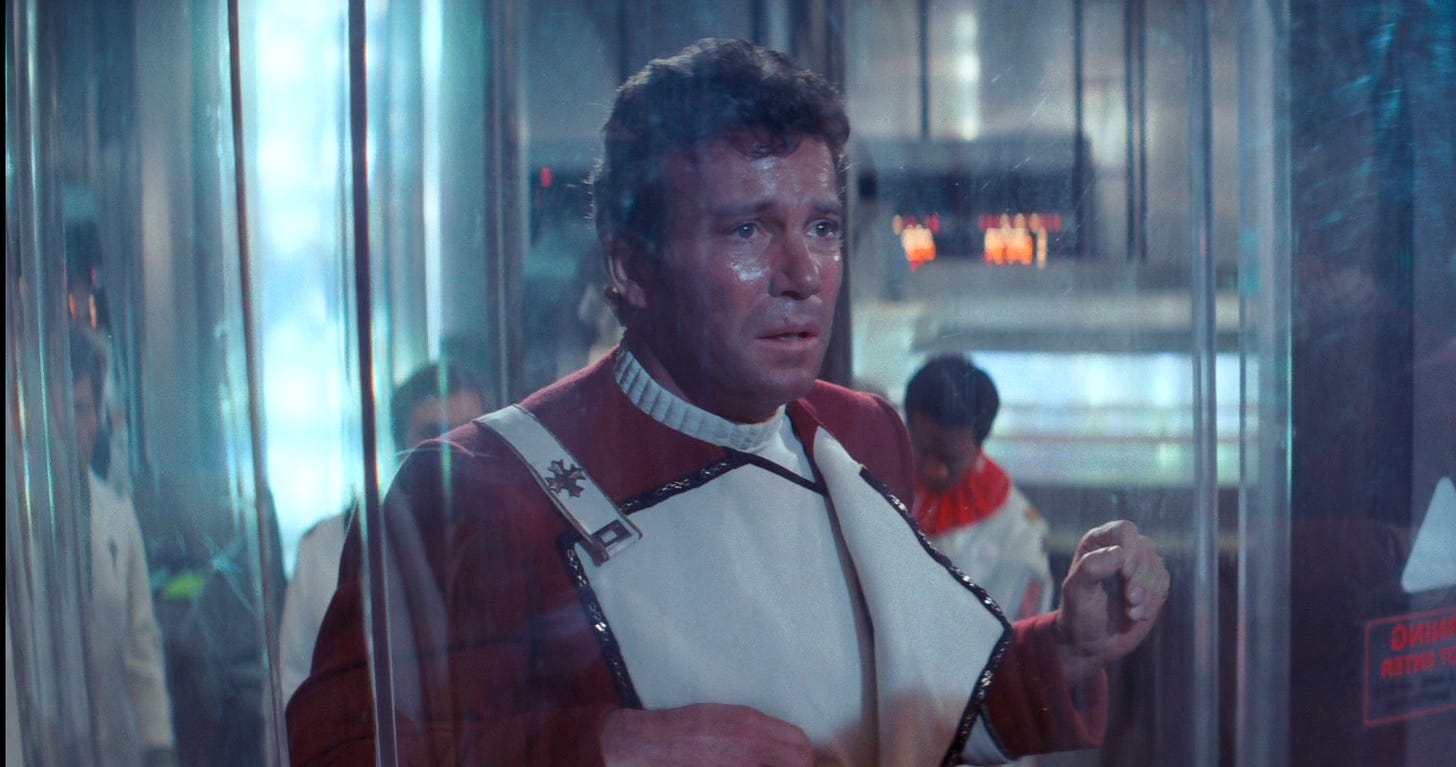Public Media's Kobayashi Maru
America's federally-funded broadcasters are losing both their funding and their funder by the end of the year. What now?
In the opening scene of the 1982 film “Star Trek II: The Wrath of Khan,” the crew of the U.S.S. Enterprise receive a distress signal while on a training mission with a cadet at the helm. A civilian ship, the Kobayashi Maru, is stranded in hostile space with several hundred passengers and crew and is desperate for help. Ignoring her crewmates’ warnings, the cadet orders the Enterprise to begin a rescue mission - only to come face-to-face with three enemy ships in hostile space. The Enterprise is easily defeated. Afterwards, Admiral James T. Kirk explains to the confused cadet that the scenario is just a test of character. There is no way to win.
Since then, “Kobayashi Maru” has become synonymous with scenarios that only have unpleasant outcomes. And I don’t think anyone would disagree that what’s happened to public media in the past few weeks - the passage of the rescissions package that revoked the industry’s federal funding for the next two years, as well as yesterday’s announcement by the Corporation for Public Broadcasting that they’d begin winding down operations starting in October - is as close to a “no-win” outcome for the country’s public broadcasters as it gets.
Naturally, the loss of federal funding has inspired a lot of commentary from people in and adjacent to public media. I’ve seen a few in the past few days admonishing leaders for not being prepared, which is fair, but also somewhat unsympathetic: Public media (in its current form) was built around federal funding and no amount of preparation makes its rescission any easier.
Boxers spend their careers preparing to take a punch to the face, but that doesn’t mean it doesn’t hurt when it arrives.
Now is the time of mourning for the upcoming loss of the Corporation for Public Broadcasting, an independent body that has faithfully funded and shielded from outside influence the nation’s largest network of non-profit newsrooms and broadcasters for over five decades.
But it’s also the time to think about public media’s survival six months, a year, two years, from now. Public media stations are seeing an uptick in donations from concerned fans and admirers, but what will happen when the public moves onto the next shocking news story? Has it happened already?
Towards the end of “The Wrath of Khan,” the spurned cadet corners Admiral Kirk. He was the only cadet to ever beat the Kobayashi Maru scenario at Starfleet Academy and she asks him how managed to do it. Kirk admits that he re-programmed the simulation to allow him to rescue the stranded civilians without being destroyed. “I don’t believe in a no-win scenario,” he remarks with a smile.
The film is beloved among Star Trek fans because the Kobayashi Maru is analogous to the plot itself: A superhuman villain named Khan Noonien Singh engineers a crisis on a Federation research station, forcing the U.S.S. Enterprise to embark on a rescue mission that puts them in mortal danger. Admiral Kirk manages to successfully evacuate the station and trick Khan into following the Enterprise into a nebula, thereby changing the conditions of Khan’s trap. The villain is eventually defeated, but not without extracting an extremely painful sacrifice from Kirk.
Like the Enterprise, public media has been pulled into a scenario that threatens its very existence; and like Admiral Kirk, it has experienced several painful sacrifices.
But losing CPB and its federal funding is not a no-win scenario. Even now, there are groups working to help shore up the stations that have lost the most and create new sources of funding for all of public media. As I mentioned before, there are engaged donors helping to fund all stations with all giving amounts, even just a few dollars. And there are many people conceptualizing and shaping the entity that will become the new U.S. public media industry.
Don’t lose hope. There will still be sacrifices to make, but the conditions of the losing scenario public media has been forced into are being rewritten at this very moment. This is public media’s Kobayashi Maru, but only in the sense that the industry will survive what is supposed to be un-survivable.
So when anybody asks you what’s next after public media has been beaten, look them in the eyes, give them a wink, and say “I don’t believe in a no-win scenario.”




It’s tempting to call this a Kobayashi Maru moment for public media. But that’s too easy. The simulation didn’t end with Kirk, and the public media’s story doesn’t end with CPB.
Picard once said, “It is possible to commit no mistakes and still lose. That is not weakness; that is life.” That line’s been echoing in my head these past few weeks.
Stations did what they were built to do. They informed. They educated. They served. They didn’t lose because they failed. They lost because the rules changed mid-game.
But Starfleet has always had a thing for rewriting the rules. Guinan reminded us that “when the Borg destroyed my world… we survived — as will humanity survive. As long as there’s a handful of you to keep the spirit alive, you will prevail — even if it takes a millennium.” That’s what we’re seeing now. A new generation is choosing to stay, rebuild, and reimagine.
And Saru said it best: “Even in fear, you can still step forward.”
So yeah, this may feel like a no-win scenario. But I’ve worked in this field long enough to know: public media doesn't go down without rewriting the simulation.
And we sure as hell don’t believe in no-win scenarios.